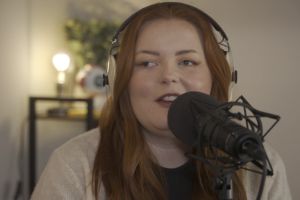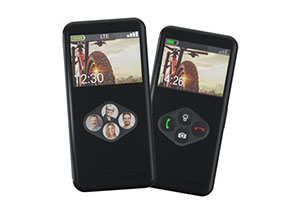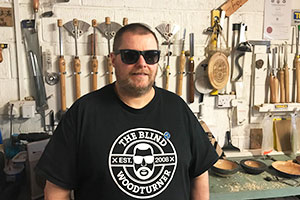smart UK introduces #1 Pro+ to the Motability scheme

smart UK has announced that the award-winning #1 Pro+ is now available to order on the Motability Scheme, opening the door for customers.
Blind Broadcaster Highlights Support Available During Power Cuts With Priority Services Register

Blind broadcaster Lucy Edwards urges people needing priority support during a power cut to sign up to the Priority Services Register (PSR)
Accessible technology – smartphones made easy

The internet is an integral part of everyday life and connects us to everything we need – from messaging family to banking and buying groceries. But the problem for some people is that many smartphone are not easy to use – for older people, those with visual impairment or motor issues, the thought of learning to use a smartphone can be an intimidating. Now, ground-breaking new smartphones from emporia Telecom promise to change the way people with accessibility issues interact with modern communications technology. We spoke to Chris Millington, Managing Director of emporia Telecom, to find out more about its range of accessible smartphones. What are the challenges faced by people with accessibility issues, when using smartphones? Whilst some mainstream smartphones have accessibility features, they do little to assist those whose visual impairment is exacerbated by dexterity, circulatory and nerve issues. The majority of regular phones simply do not address the older audience who have moderate or severe impairments alongside vision loss. Those with impaired vision can struggle to read small text within cluttered interfaces and rely increasingly on audio as a superior form of interaction with their devices. Unfortunately, most phones do not consider the older generation, as adapted audio assistance tools can feel like an afterthought to the people who rely on them. Many older people rely on hearing aid compatibility which many devices lack, meaning they can also struggle with hearing calls or notifications when away from their devices. We want to create a world without barriers where anyone with an impairment can lead a full life and take advantage of technology rather than feeling excluded or forgotten. How do your products address this? To develop our TALKactive device, we worked alongside the Technology For Life team at the Royal National Institute for the Blind (RNIB) to develop specialised devices that cater to the needs of blind or visually impaired people and lower the barriers to technology. The phones all include a specially adapted voice assist function which offers voice support throughout all functions of the phone. Accessibility to us also includes cost barriers. The addition of accessibility features to a smartphone can bear massive costs that will inevitably be passed onto the consumer. It is unreasonable to expect people to spend £1,000 on a device they can only use 5% of the functions. By using the Talkative, we were able to include the power and natural language of Google Voice to connect with people at an accessible price point. People need to be able to get a product they can use at a price they can afford. The voice assist will ‘talk back’ each button when typing, as well as caller ID, new messages, menu navigation and even time and battery status when the phone is closed. This means that every aspect of the phone has been considered and visually impaired people can use a device that feels like it was made for them. All our devices are catered towards deaf people, with hearing-aid compatibility built-in as well as extra-loud notification sounds that really make a difference. By using a feature phone rather than a smartphone, the physical buttons, tactility and simplicity play a huge role for older people who have sight or hearing loss. These details work to negate much of the frustration and confusion often caused when impaired people use phones not specifically tailored to their needs. How can your product help people to live independently for longer? Nowadays, a mobile phone is undoubtedly the most important and powerful item that we carry. In today’s world living without a functional mobile phone is a huge hindrance to a person’s independence. By providing more accessible solutions to those with impairments, they are able to utilise the vast functionality of their mobile phone to a better standard. For some, impairments progress past the point where the average mobile phone becomes unusable. Confidence is underpinned by simplicity and usability and plays a huge role in independent living. Our products allow users to feel confident in their use of technology and in their ability to have an independent life. Have you seen a rise in demand for your product since lockdown? Yes, we definitely saw a rise in demand across all of our devices during Covid lockdowns, from simple home phones to smartphones. As people became more reliant on technology and loved ones became less accessible in the real world, more and more elderly people looked towards technology to maintain connections. The world changed a lot and the training book that comes with our smartphones broke barriers for the elderly and helped them get connected. Technology has also become part of our daily routine, with track and trace and contactless payments becoming more common, the older generation needed to have access to this too. This change is one of the few benefits of the pandemic, meaning that thousands of our customers who may have previously been deterred by the thought of owning a mobile phone have become empowered by taking the leap. This has only accelerated our progress towards digitally enabling all seniors and helping them stay independent. MAKING THE INTERNET ACCESSIBLE FOR PEOPLE WITH SIGHT LOSS Jennie Mather, senior retail products manager at RNIB, worked alongside emporia to develop its products. She said: “There are 350,000 people in the UK who are registered blind or partially sighted, and 70% of these are aged over 65. “The TALKactive phone has been designed with them specifically in mind. It was great to work closely with emporia during the development stages of the phone to really tailor features specifically for people with sight loss. “This accessible, easy-to-use feature phone will enhance day-to-day life, and RNIB is proud to be its exclusive distributor.” For more information about emporia Telecom, see emporiatelecom.co.uk
How Chris kept on turning after going blind

Chris Fisher has made quite a name for himself in the media – you might know him as The Blind Woodturner. Chris wasn’t born blind – toxoplasmosis struck in 2008 when he was working as an engineer with a busy life as a husband and dad to a young son. But after a difficult adjustment period, where Chris had to battle severe anxiety as well as get used to life without sight, he “turned” his life around. With the help of wife Nicola, he is now helping others to do the same. UCan2 editor Victoria Galligan caught up with Chris at his home in Whittle-le-Woods, Lancashire… What happened when you went blind suddenly 12 years ago? How did you cope? You learn to adapt – I suffered with crippling anxiety for four years and that started about a year after going blind. The first year of being blind was all about going to rehab, working with a sensory team and social workers but then I started feeling terribly sick, actually being sick, having panic attacks, hallucinations, muscles spasms, not sleeping, being afraid to go out and sometimes having to come back home because I’d had a panic attack and support worker at the time, Dean, would have to bring me home. It was a terrible place to be. If I didn’t have the network of people around me, my friends and family, I probably would have ended my life. I get why people commit suicide and I was getting towards that point. Luckily I have a son, who was seven at the time, and a wife and I felt I didn’t have that option. So I dug deeper than I ever thought possible and, with the help of counselling from the RNIB’s bereavement service, and going on anti-anxiety meds, slowly but surely I felt “Hey! I actually felt good today!” Then I started going out more – I got through it and I’m so glad I did. Then I started chomping at the bit and feeling: “Right, I’m ready to attack life now!” You mentioned your PA Dean and the RNIB – which other services were there to help you? Initially it was support from Wigan Council’s Sensory Team as I lived in Greater Manchester at the time. They were absolutely brilliant in helping me to come to terms with my disability and giving me practical advice – they taught me how to prepare a simple meal safely or a cup of tea. They showed me how to use some gadgets like a signal cane, and I got some other gadgets from the RNIB like liquid level indicators, talking measuring jug, talking tape measure and a Daisy Player which is a device that plays CDs with tactile, chunky controls on it. I use it to listen to books. And for the first eight years I had a support worker, Dean, then when he changed his job I got Bamber, my guide dog. He’s next-level intelligent and truly indispensable. I’m the navigator when we go out but he’s my pilot and takes me where I need to go! I can ask him to find steps, find a button for a lift, a bus stop. At home, he never leaves me on my own and he’s always watching me! He comes down the stairs in front of me to make sure I’m safe and he’s ever-vigilant. How did the woodturning start? I started to want to try new things – but obviously as a blind man. And because I was a keen horror film fan and loved doing stuff at Halloween for the house. I wanted to make a vampire stake for the garden – people said “You what?” but it was something I wanted to do! You’ve got to start somewhere. I started to listen to woodturning tutorials on YouTube and ended up listening to 600 hours! I was really serious about it because I wanted that vampire stake! I listened for five or six hours a day for months, assimilating all the information I could about woodturning, tools, techniques, health and safety and finishing. I got in touch with a few YouTubers to ask them to add some audio description to the videos – a lot of the videos are compressed, with no verbal directions and they’re set to music, which is of no use to the blind! So about 10 woodturning YouTubers added some verbal information and they’d say: “This blind guy’s got in touch because he wants to learn woodturning so, for you Chris, I’m going to explain what I’m doing here!” After the 600 hours I got myself a lathe, some wood and some tools and taught myself, just by touch and with a picture in my mind. Because I was sighted until I was nearly 39 years old, I had a great memory map which played in my favour. I’d worked with tools and my hands all my working life – I didn’t have any accidents but my early work was a bit shoddy and I made mistakes. But I put the hours in and the practice and became very passionate and people started to want to buy what I was making. Last August I became the first-ever blind person to join the Register of Professional Turners. I had to apply with photos of my work. This had to be backed by two sponsors, and then they came out to assess me. It was a rigorous test by a master turner from the Worshipful Company of Turners (which has 800 years of history). There was an interview, an accounts check of my business to make sure I was making money from woodturning, a risk assessment check, an examination of my completed works plus a check of the workshop and a practical assessment – which was videoed. It was tough but I passed! You’ve now built a real brand around yourself! How did you achieve that? I started a YouTube channel to inspire and motivate people